The first Polestar SUV sits in one of the most contested luxury EV segments in the U.S., competing with the Tesla Model X, Volvo EX90, BMW iX, Mercedes EQE SUV, and the Audi Q8 e-tron. The new EV is expected to go on sale in the U.S. by April 2024, and marketing efforts are in full swing before customer deliveries commence.
Prototype display cars have arrived at U.S. dealerships and are simultaneously being displayed at various public events. Recently, I checked out a Snow-colored sample of the Swedish electric SUV. Here are my observations:
Name
The Polestar 3 has a numerical name, just like the brand’s first two models and all other upcoming models. Thomas Ingenlath, CEO, Polestar, told TechCrunch in August 2022 that he has “seen too many painful name-giving processes in the car industry to ever get into it.” Plus, there’s also a risk of infringing an existing trademark. The company wants to keep things simple and is happy with the current nomenclature.
Design
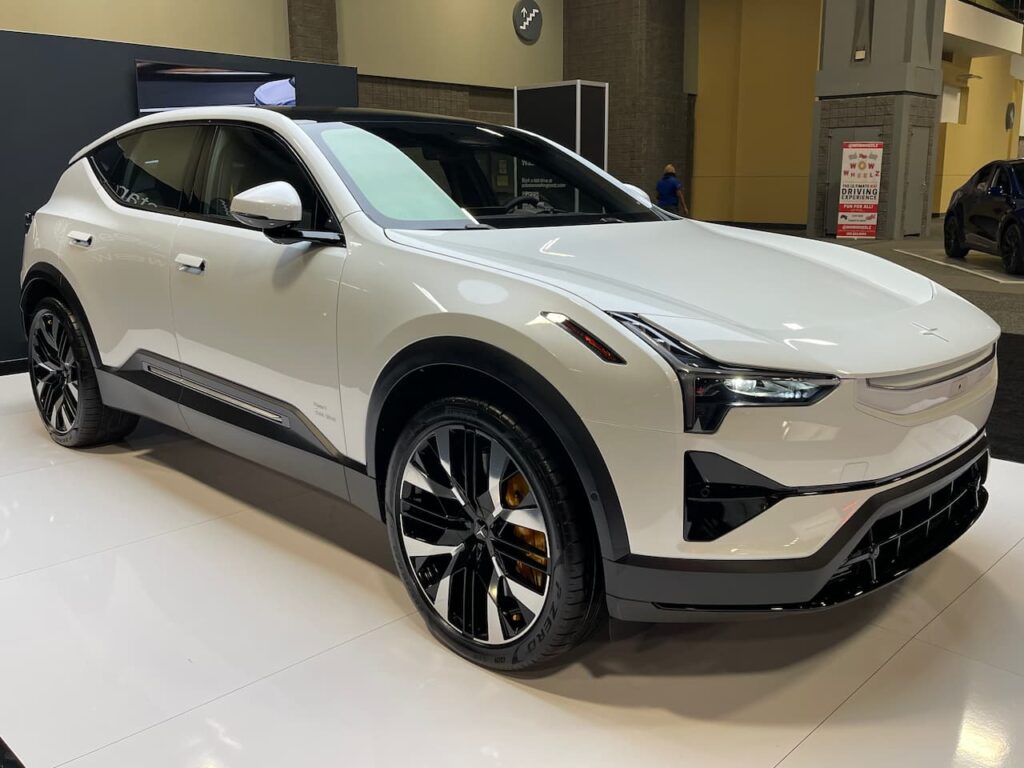
The Polestar 3 has a high-tech and sporty exterior, and while it lays a great emphasis on aerodynamics, it just doesn’t look like a jacked-up sedan like the Tesla Model X. When I saw this white unit in person, I liked the low and fast-sloping roofline, which, along with the wide body, gives the SUV an athletic stance. My favorite design element is the full-width tail lamp, which is slim, angular, and boxy, emphasizing the SUV’s broadness and futuristic nature. I didn’t find the Volvo EX90’s headlamps nearly as appealing as its platform-mate Volvo EX90’s, though.
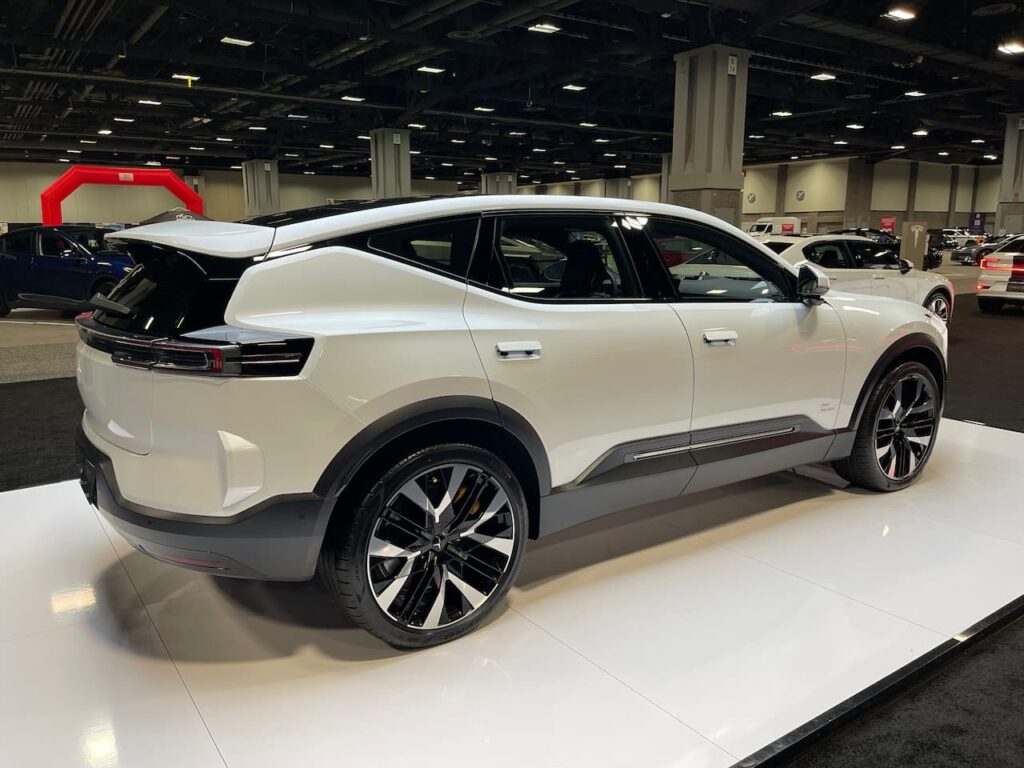
When I gave the Polestar 3 a closer look, I was impressed by the focus on cleaning up the exterior and making it more aerodynamic. I liked how the windows and door handles are flush against the surface like the fuselage of an airplane, but what particularly made me curious about the exterior were the wings; there are two of them, one on the lower edge of the hood and one at the end of the roof. I also liked the glass-to-edge design of side mirrors, which contributes just as much to style as drag reduction.
Interior
As expected from Polestar’s Swedish roots despite its Chinese ownership, the 3 has a properly Scandinavian interior. The sleek dashboard, ultra-compact instrument cluster, and floating center console helped me feel immediately relaxed once I shut the door close, although these weren’t the only elements contributing to the serene on-board feeling.
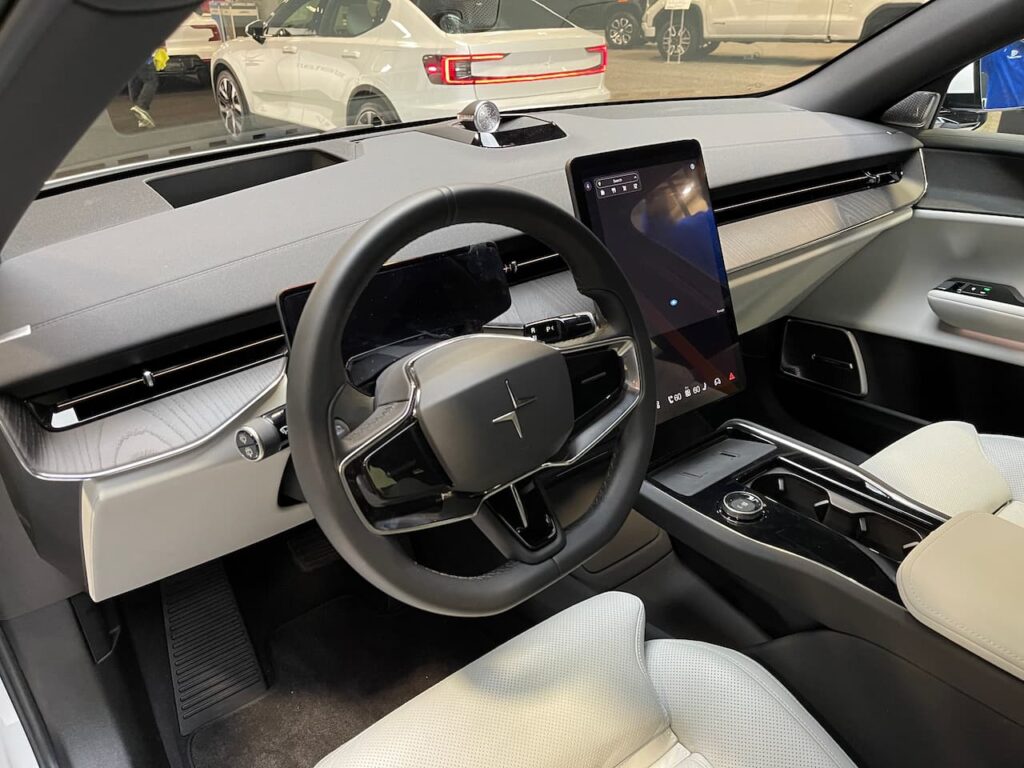
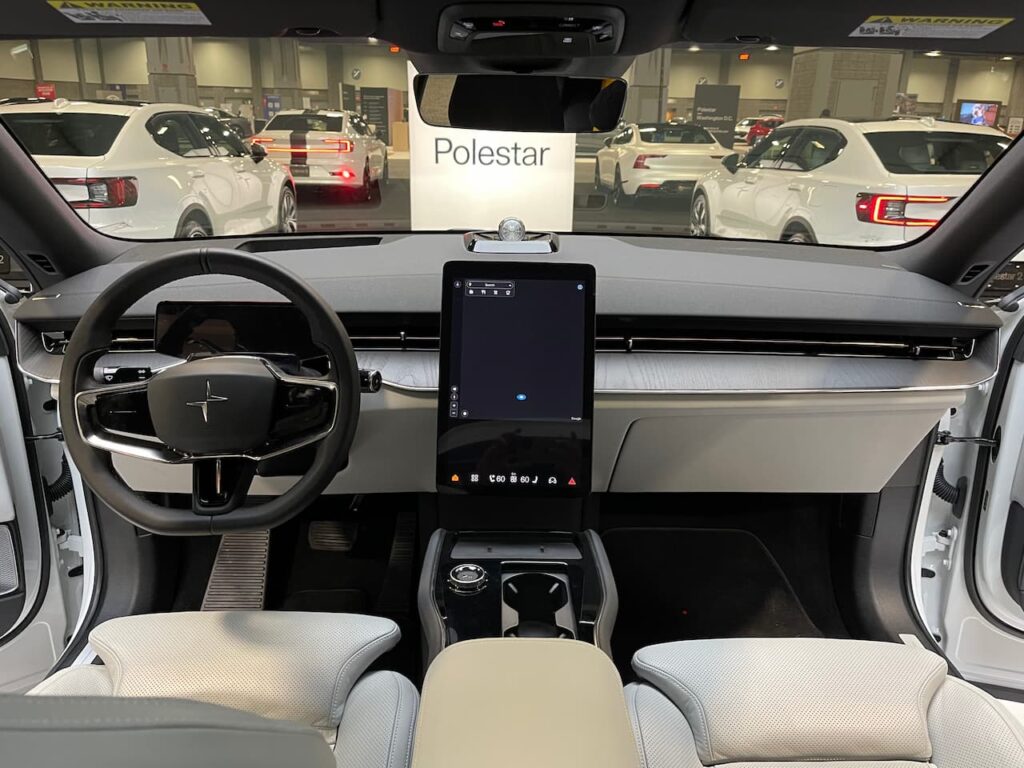
The meticulously created combination of soft-feeling and light-colored materials and the 0.4-mm-wide, laser-etched ambient light that runs around the whole cabin and has a color temperature of 5000K to replicate bright daylight also helped get a sense of calm in the Polestar 3. I touched the smallest of small parts and even the elements that usually don’t come into the eye of drivers and passengers to get an idea of the quality. In my experience, the overall quality was superb, and mind you, this was a pre-production prototype.
Vegans would be disappointed with Polestar using “animal welfare traced” Nappa leather seat covers. However, I understand that a vegan upholstery that uses Ineos Group’s Biovyn, a bio-attributed vinyl consisting of fully renewable feedstock and recycled polyester textile, is available and actually the standard fitment. In my experience, this material, called ‘MicroTech,’ felt quite premium.
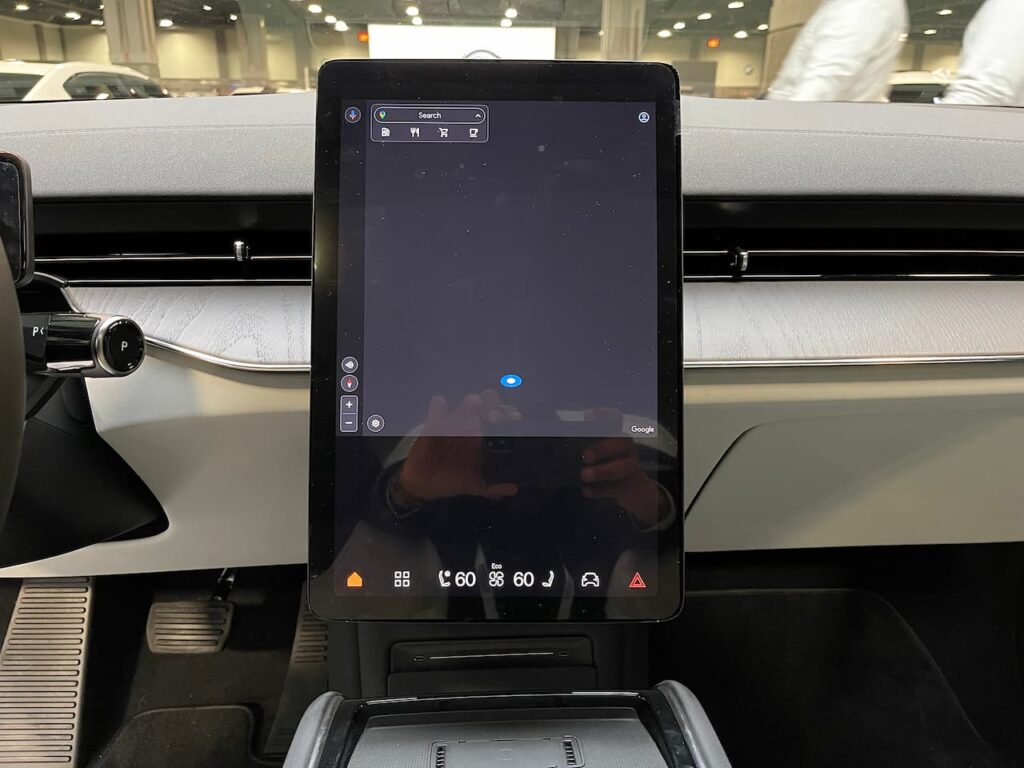
Of the two available decor options, repurposed aluminum and black ash wood, the Polestar 3 I sat in was equipped with the latter. When I touched it, it felt like real wood for a moment, and its color lent it an upmarket feel.
As a six-foot-tall person, I was immediately comfortable in the Polestar 3’s driver’s seat. The legroom was ample, and the headroom was also sufficient. Under-thigh support was ample as the seat comes with extenders. The flat-bottomed steering wheel was easy to reach from my most comfortable position. I was disappointed by the lack of analog controls on the steering wheel, though.
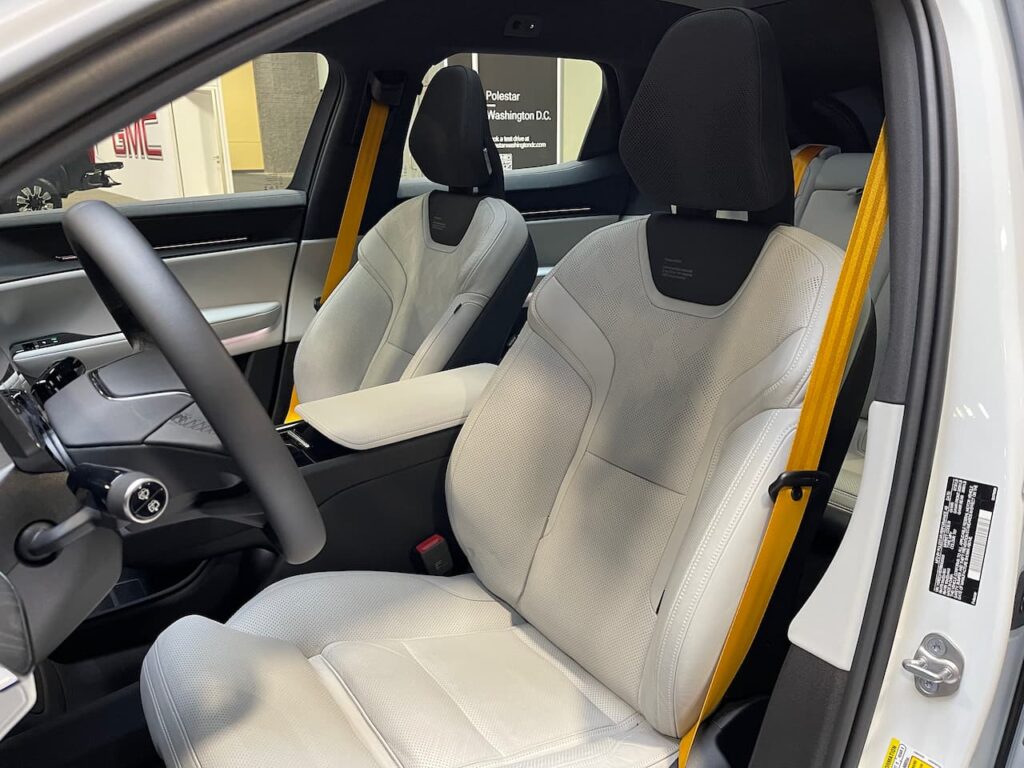
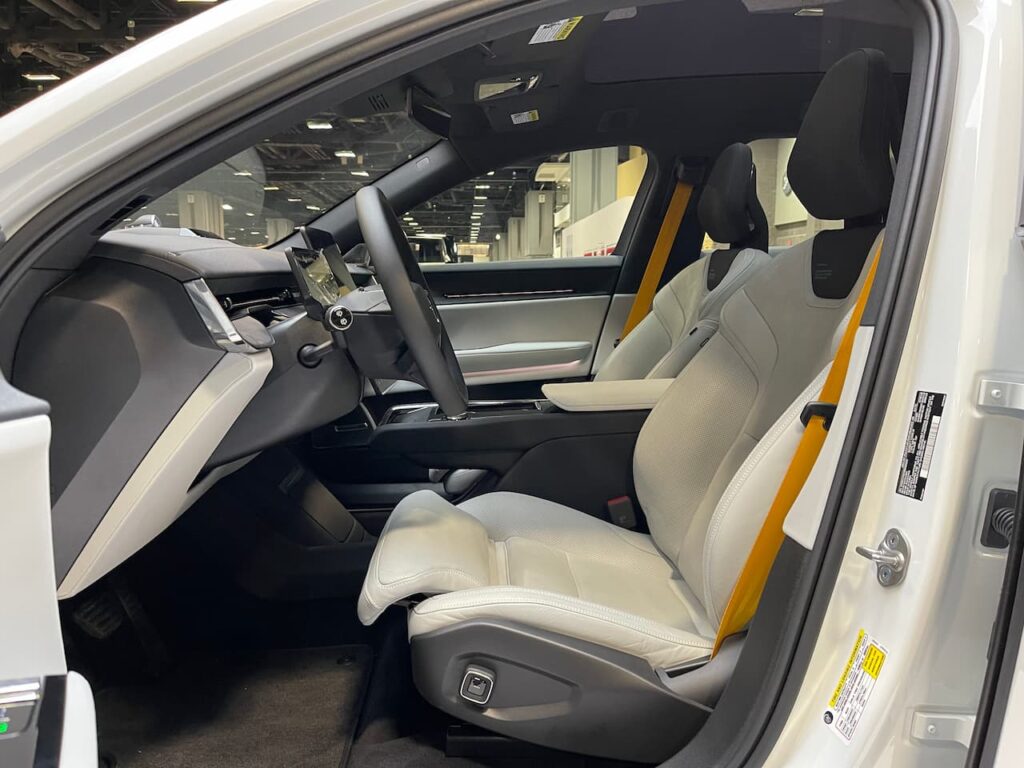
Stepping into the rear of the Polestar 3, I felt it was easy getting in. As the Polestar 3 is a two-row model with a long wheelbase, I expected it to be exceptionally spacious and comfortable in the back. A three-person bench is standard, but I wish Polestar had offered a comfier option of two captain’s chairs to make the best use of this space. That’s where the Geely Auto Group’s Lotus Eletre steps in, though, or the Volvo EX90 in case a third row of seats is also needed.
I felt that the rear seat of the Polestar 3 offered ample knee room thanks to the bespoke EV platform. Under-thigh support could have been better, and the higher floor leads to a slight knee-up posture, while headroom was good. If three six-foot-tall adults like me were to sit abreast, it could be alright for short trips, I would think, helped in part by the flat floor.
Features
The Polestar 3 comes with 21-inch wheels, Brembo brakes, a panoramic glass roof, a 9-inch digital instrument cluster, a 14.5-inch touchscreen infotainment system, a three-zone automatic climate control system, and four USB-C ports as standard. Here’s a closer look at some of the top features.
Digital Key
Polestar has confirmed that it offers Digital Key in the Polestar 3, but it hasn’t clarified whether it’s NFC-based or Bluetooth-based like in the Polestar 2. The driver can lock, unlock, and start the vehicle using the virtual key. The company also offers an NFC key card with the electric SUV.
Android-powered AVN & Google HD Map
The Polestar 3 features an infotainment system powered by Android Automotive OS. Using onboard functions via the vehicle’s center screen will be very easy and familiar for customers, especially those accustomed to using Android devices like smartphones, tablets, and TVs. Customers can use Google HD Maps, Spotify, Vivaldi Web Browser, and more native apps in the infotainment system. With Google Assistant, users can enjoy voice commands with the familiar prompt phrase “Hey Google.”
The built-in Google Play Store allows downloading new apps to the system. With 5G connectivity available, customers can update the software, download apps, stream music and videos, and get real-time traffic updates at blazing internet speeds. Excitingly, the Polestar 3 could be the first-ever production car to be equipped with Google’s HD Map feature. This new iteration of Maps is far more precise and detailed than the traditional version.
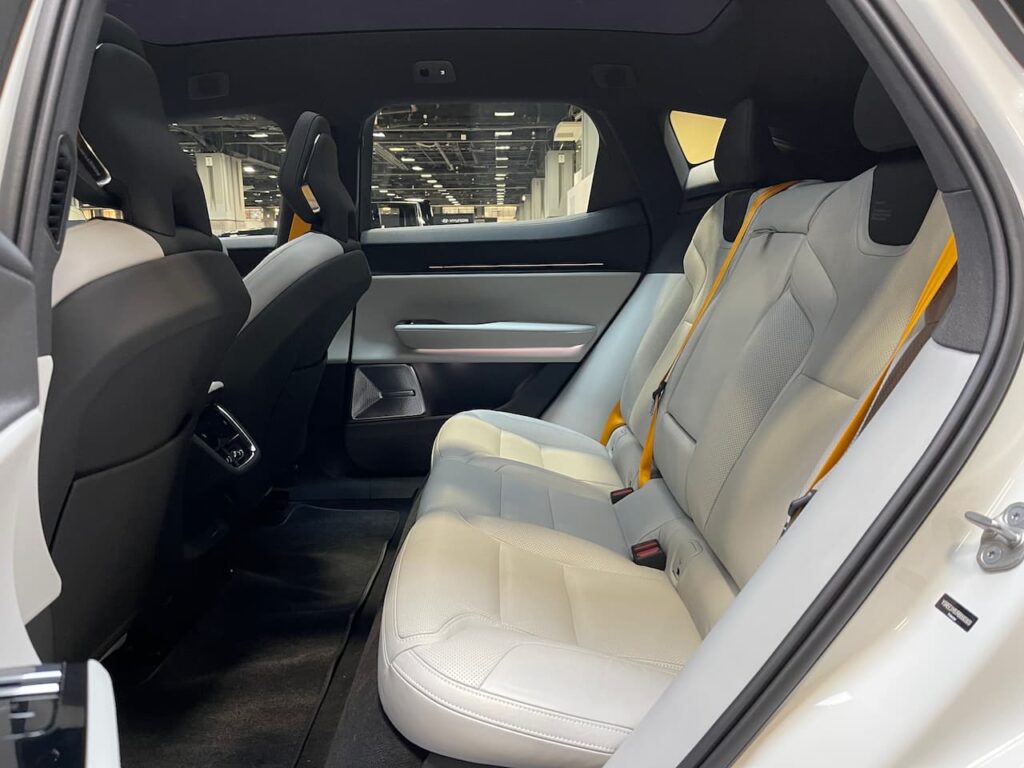
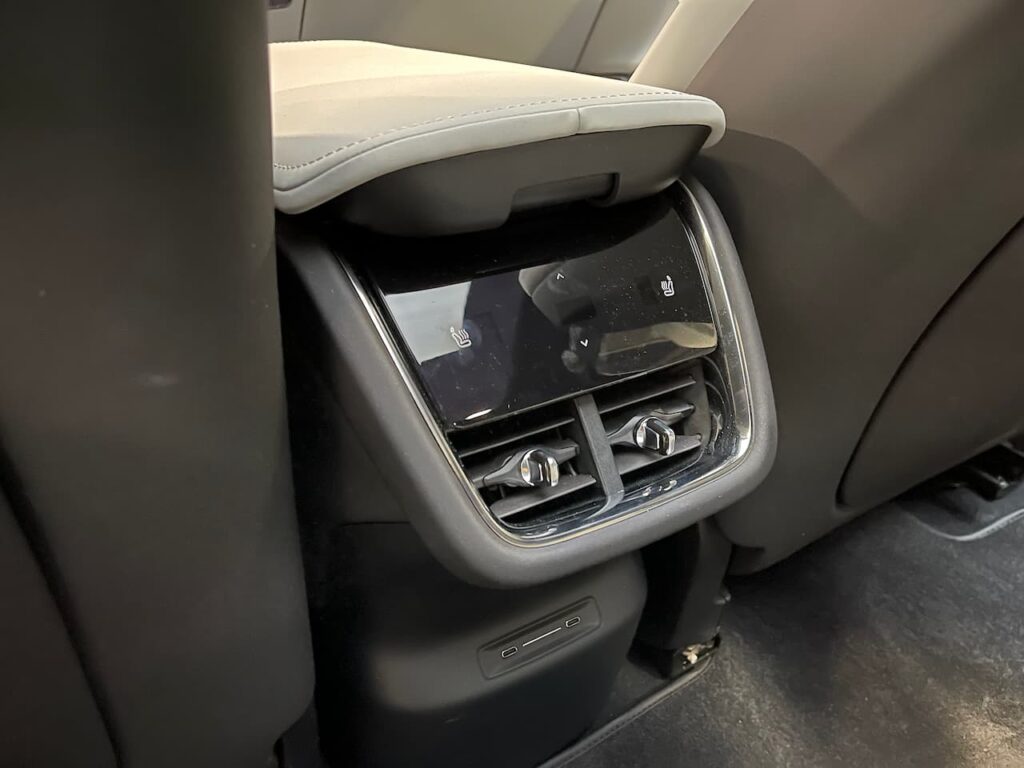
The added resolution & clarity of the feed allows the computing software to identify and recognize location-specific geographical markers. The technology goes a step further by tapping into the car’s onboard sensors that are mated to various driver-assist features, in turn harnessing Google’s wealth of data on road information (among other localization tools) and even providing GPS-based lane-keeping assistance. Support for autonomous driving is expected in the future.
Bowers & Wilkins with 3D surround sound
The Polestar 3 features a 25-speaker sound system sourced from Bowers & Wilkins. This system consists of five tweeters with the Nautilus Spiral Chamber technology, seven mid-range speakers, four headliner speakers, four full-range speakers in the headrests, four woofers, and one Fresh Air subwoofer.
Polestar has equipped the 3 with three external speakers as well, to produce the sound needed for the safety of nearby passengers and vehicles. A 28-channel amplifier with a total power of 1,750 watts drives the 28 speakers in and outside the SUV. It enables multi-channel signals such as Dolby Atmos. There’s no doubt audiophiles will love traveling in the 3.
Advanced Air Cleaner
Polestar has developed an Advanced Cabin Air (AAC) air filtration system with Volvo Cars and Stockholm-based CabinAir. The air that passengers breathe in the 3 is clear of 95% of fine particles, 97% of viruses, and 99.9% of pollen and allergens.
Specifications
The Polestar 3 sits on the SPA2 platform which will be shared with the EX90. The SPA2 is a skateboard chassis with a different floor assembly as compared to the SPA1 which underpins the XC90.
| Aspect\Specification | Polestar 3 Long Range Dual Motor | Polestar 3 Long Range Dual Motor with Performance Pack |
| Length | 193 in. | 193 in. |
| Width (incl. mirrors) | 83.5 in. | 83.5 in. |
| Height | 64 in. | 64 in. |
| Wheelbase | 117.5 in. | 117.5 in. |
| Ground Clearance | 8.3 in. | 8.3 in. |
| Curb-to-curb Turning Circle | 38.7 ft. | 38.7 ft. |
| Wheels | Cast alloy | Forged alloy |
| Wheel Size | 21 in. | 22 in. |
| Tires | Michelin Pilot Sport 4 EV | Pirelli P-Zero |
| Tire Size | 265/45R21 (front)/295/40R21 (rear) | 265/40R22 (front)/295/35R22 (rear) |
| Brakes | Brembo 4-piston, 400 mm drilled and ventilated discs (front)/Standard single-piston, 390 mm ventilated discs (rear) | Brembo 4-piston, 400 mm drilled and ventilated discs (front)/Standard single-piston, 390 mm ventilated discs (rear) |
| Cargo Volume (Rear Seats Up) | 17.1 cu. ft. | 17.1 cu. ft. |
| Cargo Volume (Rear Seats Folded) | 49.8 cu. ft. | 49.8 cu. ft. |
| Battery Pack | 107 kWh | 107 kWh |
| Drivetrain Layout | AWD | AWD |
| No. of Motors | Two | Two |
| Power | 360 kW (483 hp) | 380 kW (509 hp) |
| Torque | 840 Nm (620 lb.-ft.) | 910 Nm (671 lb.-ft.) |
| 0-60 mph Acceleration Time (Estimated) | 4.9 seconds | 4.6 seconds |
| Top Speed | 130 mph | 130 mph |
| EPA-est. Range (Preliminary) | 300 miles | 270 miles |
| EPA-est. Energy Consumption (Preliminary) | 38.5 kWh/100 miles | 43.2 kWh/100 miles |
| Towing Capacity | 3,500 lbs. | 3,500 lbs. |
| Tongue Weight Limit | 350 lbs. | 350 lbs. |
| Max. Roof Load | 220.5 lbs. | 220.5 lbs. |
The Polestar 3 is available in the U.S. in two dual-motor AWD variants, both with a massive, 111 kWh (net) battery pack. The base variant’s powertrain produces 489 hp and 620 lb.-ft. of torque, allowing it to go from 0 to 60 mph in just 4.9 seconds and attaining a top speed of 130 mph. The top-end variant sports a powertrain that develops 517 hp and 671 lb.-ft. of torque and bests that 0-60 mph time by 0.3 seconds – 4.6 seconds. Its top speed is the same, though. Both variants can tow up to 3,500 lbs.
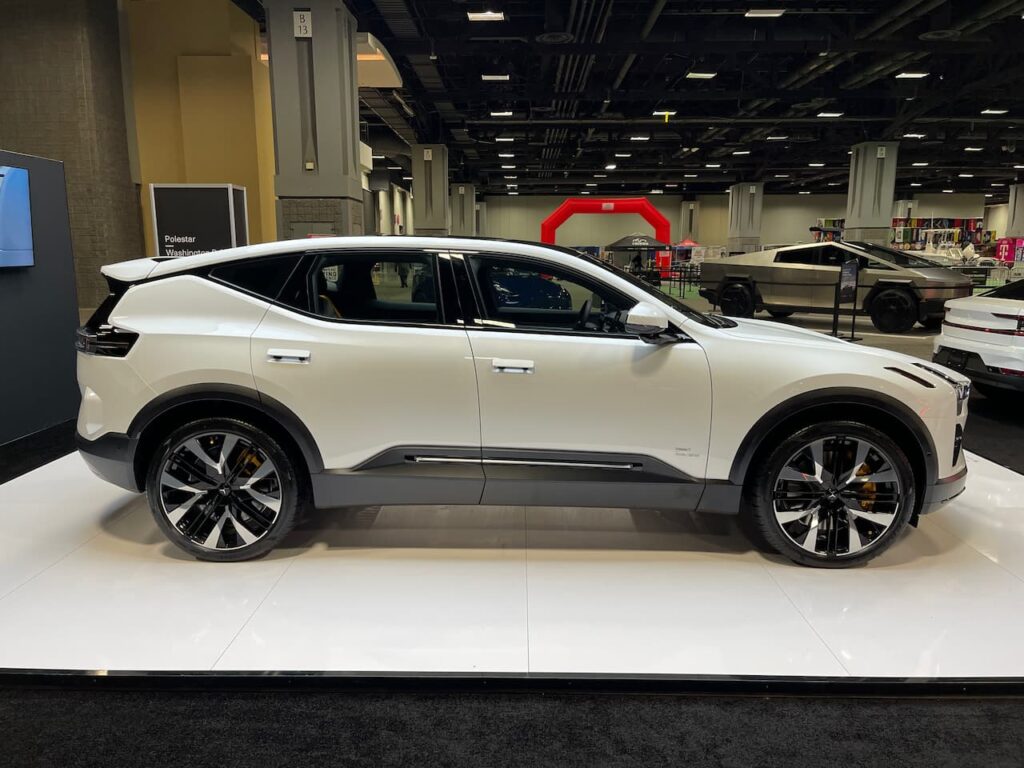
The top-end variant doesn’t offer a substantial gain in performance, but I think it will offer a better driving experience as well. With Polestar Engineered chassis tuning, it should feel firmer, while its Pirelli P-Zero tires should offer more grip. Weighing up to nearly 5,900 lbs. (curb), the Polestar 3 is quite a heavy SUV, so it could be a little lazy around the corners and may demand all possible efforts to ensure it’s nimble if driven a bit dynamically. That’s where I believe the differently tuned chassis and the special tires of the top-end variant could show the extra money’s worth.
A dual-chamber air suspension system is standard in the Polestar 3. I expect it to give the SUV all the flexibility it needs to alter its character from a comfort-focused luxury cruiser to a dynamic model engineered for driving enthusiasts. Charging is possible at up to 11 kW (AC)/250 kW (DC), with a 0-100% normal charging session (using an AC charger) taking 11 hours and a 10-80% fast-charging session taking half an hour (using a DC charger).
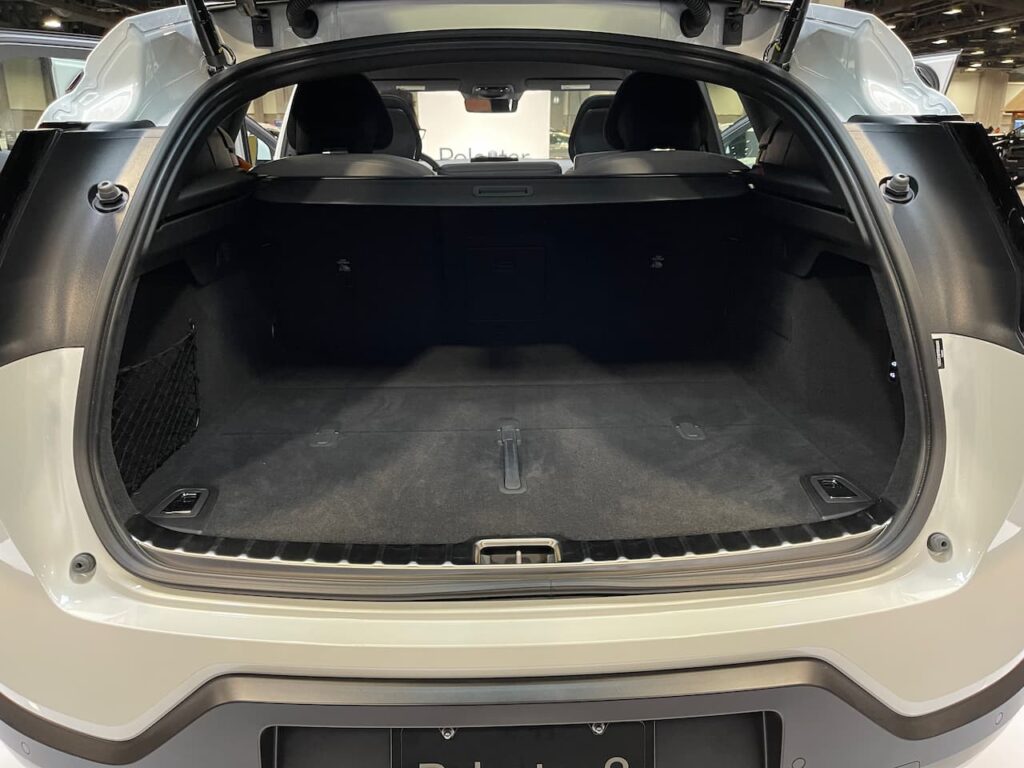
The Polestar 3 is estimated to deliver a range of 300 miles (Polestar-est.) of range in the base variant and 270 miles (Polestar-est.) in the top-end variant. I think most customers would find the base variant more than good enough for their requirements.
Safety & driver assistance
Polestar has loaded the 3 with a raft of active and passive safety systems. The company offers the new model with up to ten airbags, the biggest of which takes just 30 milliseconds to inflate and deflate again. Just for reference, a blink of an eye takes 180 milliseconds, and a car crash takes even lower – 100 milliseconds. Two of the ten airbags are inner side airbags that respond in just eight milliseconds! The ten airbags include a passenger knee airbag as well, which is exclusive to the units sold in the U.S. and Canada.
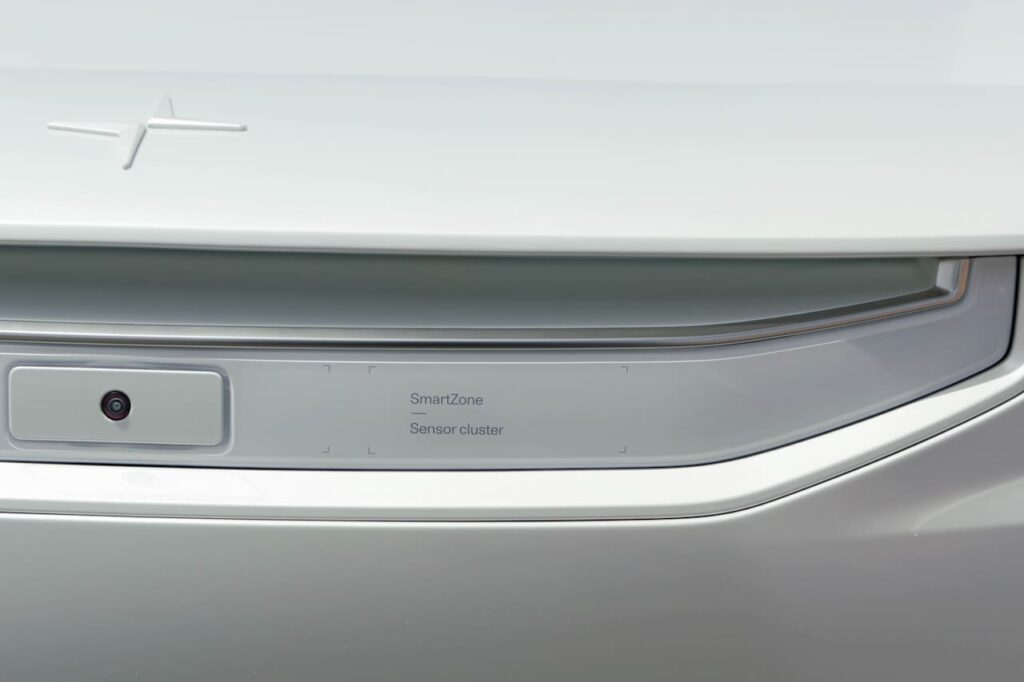
Smart Eye
Five radar modules, five external cameras, and twelve external ultrasonic sensors are standard in the 3. The Polestar 3 also sees the integration of eye-tracking technology by Smart Eye, which is also a Swedish company based in Gothenburg. Comprised of two closed-loop driver monitoring cameras, the system not only tracks the driver’s head but also their eyes and eyelid movements. If it detects distraction, drowsiness, or lack of responsiveness from the driver, Smart Eye will initially issue visual and audible warnings. If the driver continues to remain unresponsive to these alerts, the system will initiate an emergency stop.
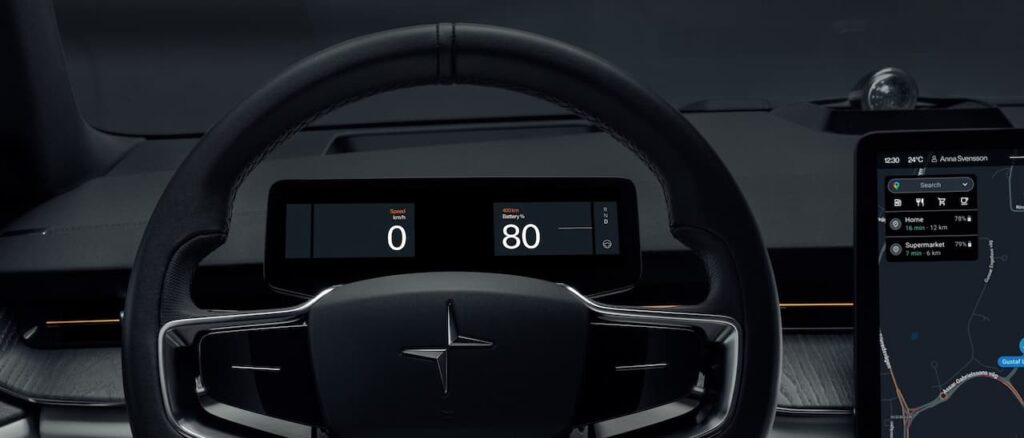
Smart Eye is an integral part of a broader suite of safety measures in the Polestar 3 known as Driver Monitoring Systems (DMS). Active driver assistance features such as Driver Alert Control, Lane Keeping Aid, Adaptive Cruise Control and Pilot Assist, come along with DMS. A powerful centralized computer, using Nvidia SoCs, interprets and processes scores of data constantly streaming in from various systems and sensors in the vehicle. Polestar is confident that the ‘Smart Eye’ system will help its cars weather the rigors of stringent safety standards that are expected to arrive within the decade.
Autonomous Driving
In the U.S., the Pilot Pack that includes a head-up display, Park Assist Pilot, and Pilot Assist driver assistance system is standard in the 3. From Q2 2023, Polestar will offer an optional high-spec Pilot Pack that adds a Luminar-developed LiDAR, an additional control unit from NVIDIA, three cameras, four ultrasonic sensors, and cleaning for the front- and rear-view cameras.
Polestar has told investors that the 3 will gain “unsupervised highway pilot” at some point during its lifecycle. SAE Level 3 could be the targeted level of autonomy in the 3, achievable with a software upgrade later during the lifecycle. Zenseact will provide the software for the 3’s highway pilot.
Chassis
The 3 has a rear-biased dual-motor powertrain and a 50:50 weight distribution. Compared to a gas-powered SUV, the center of gravity is 100 mm lower, around the same as in the Polestar 1, a hybrid two-door, 2+2 seat GT coupe!
TDVC
The 3 has a Torque Vectoring Dual Clutch (TDVC) function that individually controls the torque distributed between the right and left rear wheels for improved agility at low speed and stability at high speed. The front motor can be decoupled to save energy when not needed.
Adaptive suspension
An adaptive, self-leveling dual-chamber air suspension with ZF active dampers is standard in the 3. With a high updating frequency of 500 Hz, the active dampers adjust as required by the road conditions once every two milliseconds. For example, if the driver is driving the 3 at 90 km/h (56 mph), it updates and adjusts the dampers every 5 cm (0.2 ft.) of the road.
Price
The Polestar 3 retails at USD 85,300 in the base variant and USD 91,300 in the top-end variant. Both prices include a USD 1,400 destination charge.
Polestar’s 4 new EVs

The Polestar 3 is part of four new EVs from the Swedish brand. The Polestar 4 was recently launched in China, and will be followed by the Polestar 5 in 2024. Then, after a gap of two years, a Polestar 6 will follow in 2026. By 2030, Polestar wants to create the first truly climate-neutral car, and the company will develop this model under the Pole
TopElectricSUV says
The 3 looks like an excellent choice for those who want a performance SUV that is also spacious enough for families. It comes packed with high-end features, delivers phenomenal performance and driving dynamics, and has a decent range considering the SUV’s size and specifications. Best of all, it’s priced competitively when compared to European rivals. Well done, Polestar!
Polestar 3 FAQs
What is the Polestar 3 release date?
Customer deliveries of the Polestar 3 in the U.S. will likely begin by April 2024.
What is the Polestar 3 price?
The Polestar 3 is priced starting at $85,300.
Which models are Polestar 3 rivals?
The Polestar 3 competes with the BMW iX, Tesla Model X, Audi Q8 e-tron & Mercedes EQE SUV.
An automobile engineer by training, I’ve analyzed the global car market since 2005, with a keen focus on EVs since 2008. My journey in online automotive publishing spans 16 years, during which I have reviewed cutting-edge automotive technologies and interviewed leading CEOs and vehicle developers from around the world.
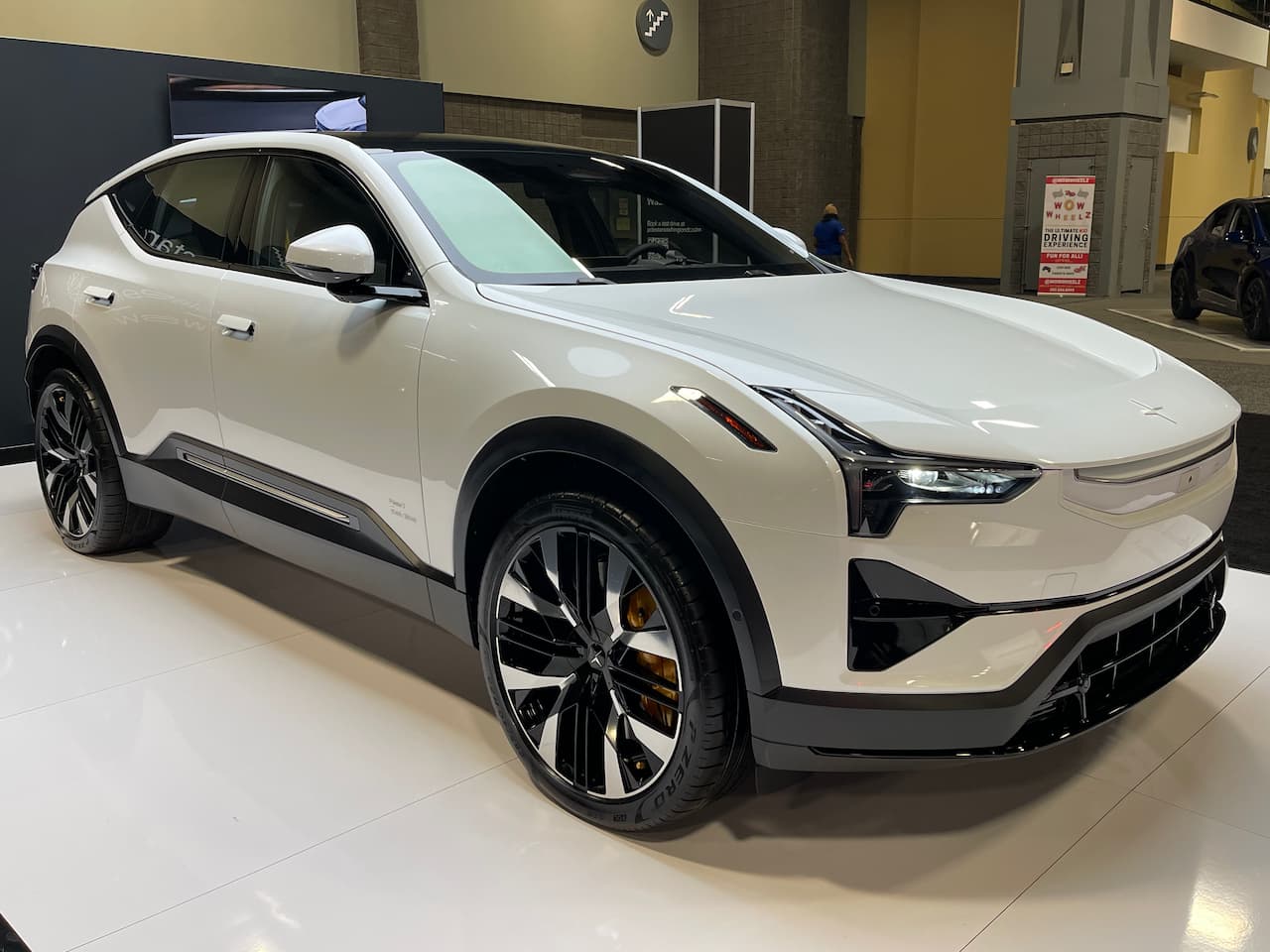

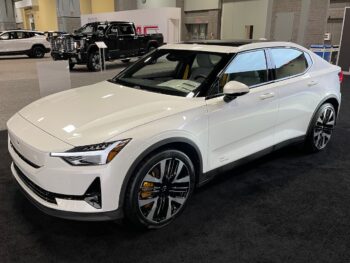

![Polestar 6 roadster offers 373-mile range & a whopping 871 hp [Update]](https://topelectricsuv.com/wp-content/uploads/2022/08/Polestar-6-O₂-concept-side-profile-350x233.jpg)